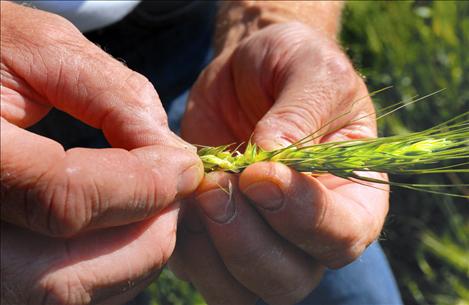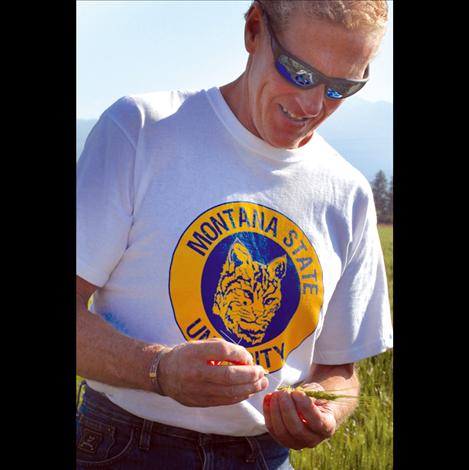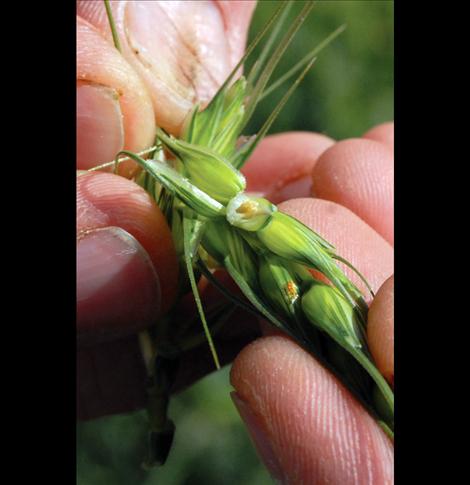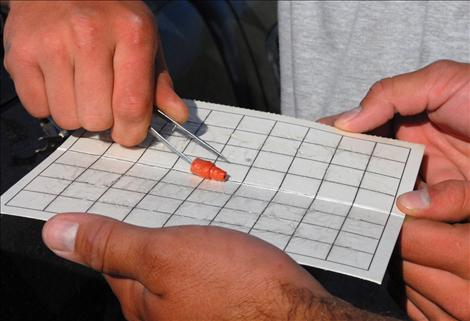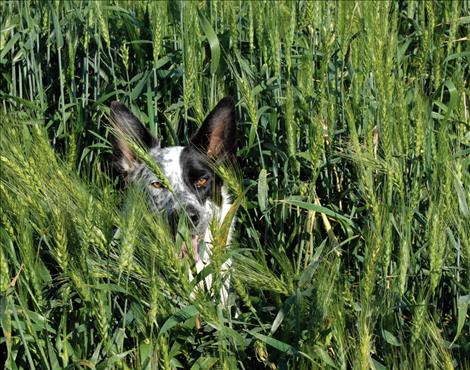Tiny invaders: Locals study wheat midge infestation
Hey savvy news reader! Thanks for choosing local.
You are now reading
3 of 3 free articles.
Wheat farmers beware — a bright orange insect called a wheat midge could be invading your fields.
Wheat in the blossom stage is most vulnerable to wheat midge, according to Jack Stivers, MSU Extension Agent for Lake County. The midge is a predator on spring wheat acreage only, Stivers said, since winter wheat is already too mature when the weather gets warm enough to activate the insects.
The tiny neon orange insects lay eggs in the wheat flowers. When the eggs hatch, the larvae “reduce the kernel” and eat everything, Stivers said, but the plant looks normal.
When wheat midges invade a field, crop production treatment is needed.
Wheat midges came into Flathead County eight years ago from North Dakota and spread to Lake County and other surrounding areas. With its 12,000 acres of wheat, Lake County is the “second hottest county” for the infestation in Montana, Stivers said.
To try and get a handle on the bugs, Ronan Future Farmers of America advisor Reese McAlpin and FFA student Tristan Thingelstad are trapping and monitoring the insects as part of a study conducted by Bob Stougaard, head of the MSU Northwest Ag Research Center in Kalispell.
McAlpin and Thingelstad use a specially designed bug trap about a foot long with a triangle-shaped roof and a sticky board floor, squirted with pheromones to lure wheat midges to the trap. The trap color is also part of a study, because traps with green roofs are believed to attract more wheat midges while white-roofed traps entice other insects.
McAlpin and Thingelstad place the traps 75 feet apart.
They begin their daily trap check on wheat grown by Ken McAlpin, south of Ronan. They check 12 fields daily, Reese said. Thingelstad will be a sophomore at Ronan High School this fall and is working on the project as part of his FFA requirements. His parents raise wheat, and he’s checked insect traps before so
he volunteered when Reese asked his students if any of them would be interested in the study.
“Sometimes the most difficult part of research is finding a student who is interested,” Reese said. “Tristan has done an excellent job.”
Reese hopes Thingelstad’s experiences will encourage other students to get involved in research.
For wheat producers who are interested in having their fields checked for wheat midges, contact the Lake County Extension office at (406) 676-4271.















